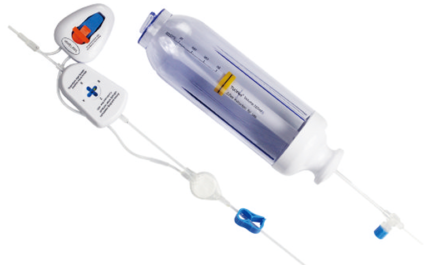Introduction to Rapid Diagnostics
Rapid diagnostics refer to medical diagnostic techniques that can provide quick results, often in a point-of-care setting. These tests are typically user-friendly, require little technical expertise and provide results much faster than traditional diagnostic methods.
Benefits of Rapid Diagnostics
Rapid Diagnostics have several important benefits for patients and healthcare systems. Some of the key advantages include:
Speed and Convenience
Traditional diagnostic tests like blood work or imaging scans often require samples to be sent to an external lab for processing. This can delay test results for days. Rapid diagnostics minimize turnaround time and give physicians access to test results within minutes or hours. This expedites clinical decision making and patient treatment.
Point-of-Care Testing
Many rapid diagnostic devices are portable and designed for use in non-laboratory settings. Doctors can perform these tests at the patient’s bedside, in emergency rooms, clinics or even at home. This facilitates diagnosis and triage for time-sensitive conditions without the need to travel to a lab.
Improve Clinical Outcomes
Timely access to accurate diagnostic information leads to faster clinical interventions. For conditions like infections or cardiac issues, rapid diagnostics can significantly improve outcomes by enabling prompt initiation of effective treatments. Delayed diagnoses often correspond to worsening patient prognoses.
Lower Costs
Faster turnaround for test results reduces the length of patient hospital stays. It also avoids repeat/follow-up visits associated with waiting for lab results. Overall, rapid diagnostics lower healthcare costs by enabling more efficient use of resources.
Disease Surveillance and Outbreak Response
Rapid point-of-care tests play a critical role in disease surveillance programs and outbreak responses. For example, they were pivotal in controlling the recent Ebola epidemic in parts of Africa by facilitating quick identification of infected individuals.
Rapid Diagnostic Technologies
Some of the major types of medical diagnostic tools that enable rapid testing include:
Lateral Flow Assays
First introduced as home pregnancy tests, lateral flow tests have expanded to infectious diseases, cardiac markers and drugs of abuse screening. An analyte interacts with antibodies or antigens on a chromatographic strip or cassette to generate a visual test line within minutes.
Nucleic Acid Amplification Tests
NAATs multiply the number of DNA or RNA copies of a pathogen to detectable levels for faster identification of infectious agents like influenza, HIV and hepatitis. Isothermal amplification methods don’t require specialized equipment and can provide results in under an hour.
Biosensors and Microfluidics
These integrate biology and microelectronic devices on a single chip for miniaturized, automated analysis of biological samples. Microfluidic “labs-on-a-chip” can run complex diagnostic assays rapidly from minute sample volumes with minimal user intervention.
Molecular Diagnostics Instruments
Benchtop analyzers that utilize real-time PCR, hybridization assays and microarrays offer sensitive detection of genetic material from viruses, bacteria and cancer markers directly from patient samples in 1-2 hours. This is faster than conventional PCR methods needing separate thermal cycling steps.
Point-of-Care Imaging
Portable ultrasound machines, x-ray devices and CT or MRI scanners are now small enough for use outside radiology departments. They enable rapid anatomical or functional assessment for emergency diagnosis and treatment monitoring at the patient’s bedside.
Implementation Challenges
While rapid diagnostics provide clear benefits, some challenges still limit their widespread clinical adoption and real-world impact:
Performance and Accuracy
Test sensitivity and specificity may lag behind standardized laboratory methods depending on the technology used. Quality assurance and standardization need strengthening for reliable clinical decision making.
Technological Expertise
Most point-of-care devices are easier to operate than traditional diagnostic platforms but still require a basic level of technical and operational knowledge that may not be uniformly present.
Cost and Infrastructure Requirements
Rapid tests often have higher unit costs compared to centralized laboratory tests. Additionally, their implementation requires upfront investments in instruments, supplies, maintenance, quality oversight etc. which demands significant funding support.
Connectivity and Data Management
Real-time integration of rapid diagnostic results within healthcare systems through digital connectivity and electronic health records is another infrastructural hurdle still being addressed.
Despite current limitations, rapid diagnostics are anticipated to play an increasingly prominent role in healthcare delivery systems worldwide. Future developments likely include:
– More user-friendly tests requiring minimal or no sample preparation, like non-invasive biosensors analyzing sweat or breath condensates
– Integration of multiplexed panels detecting biomarkers for diverse conditions on single platforms
– Growing use of rapid genomics and sequencing technologies enabling near-patient genetic/molecular diagnosis
– Wider application of AI-powered image analysis for automated interpretation of point-of-care scans
– Enhanced data connectivity of tests with electronic records and public health surveillance frameworks
With ongoing improvements addressing performance, usability and infrastructure bottlenecks rapid diagnostics are well positioned to transform medical care through timely access to actionable diagnostic results.
*Note:
1. Source: Coherent Market Insights, Public sources, Desk research
2. We have leveraged AI tools to mine information and compile it



